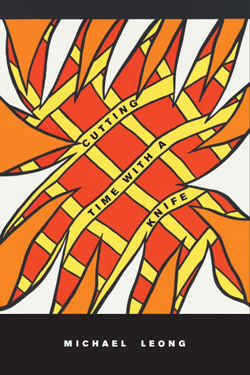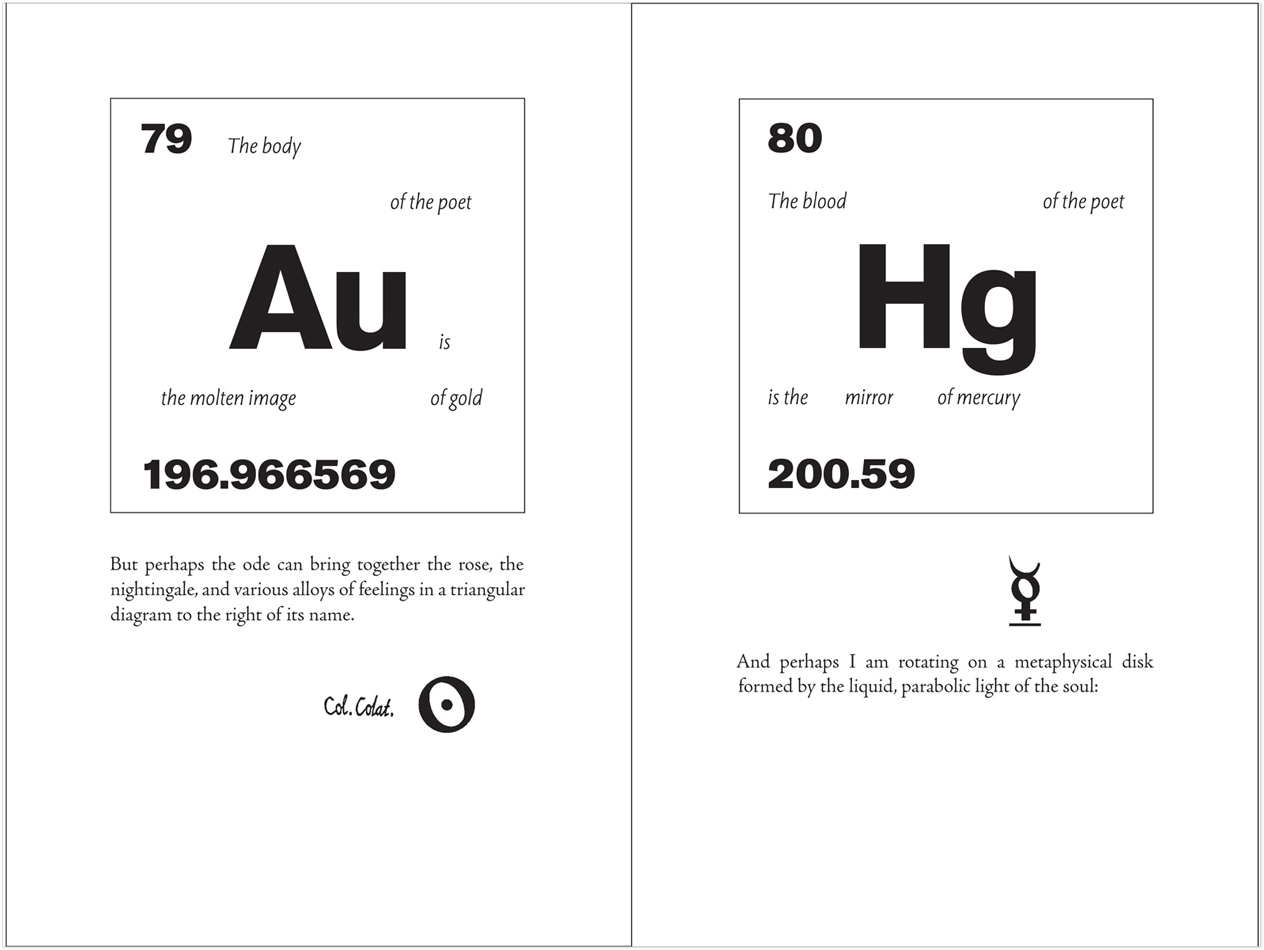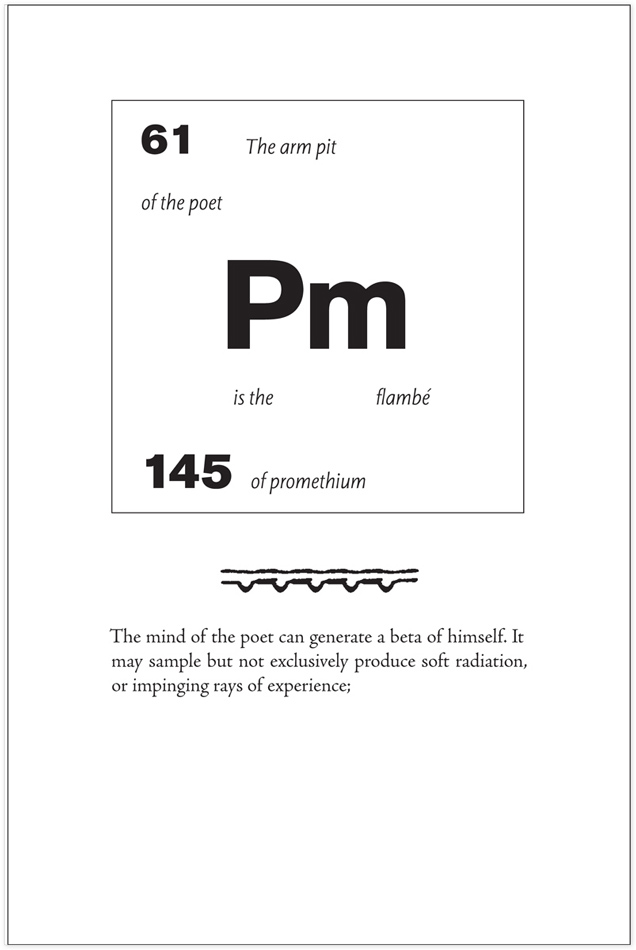
Reviewed February 15, 2013 by Afton Wilky.
To “anticipate the future contours of literary history,” Michael Leong’s Cutting Time With A Knife slices with the cursor of a mouse into T.S. Eliot’s essay “Tradition and Individual Talent,” as well as Wikipedia articles on the 118 elements that make up the Periodic Table. This “etherization” of texts takes up Eliot’s assertion that a poet ought to be a “medium and not a personality, in which impressions and experiences combine in particular and unexpected ways”: the poet is one who transforms impression and experience into a contemporary praxis.
Engaging current inquiries into language as an appropriative system, as well as a tradition of inquiries into influence and fascination with “original genius,” Cutting Time With A Knife examines Eliot’s claims by making. Writing to anticipate the future of tradition—defined by Eliot as that which constantly shapes and is re-shaped by the present—Leong positions, connects, and shuffles the material texts of the past and the present within the chamber of the page. In the resulting poems, Eliot’s analogy of the poet as “catalyst” is literally extended to the field of chemistry and natural elements.
The page emerges as the testing ground within which Eliot’s ‘poet,’ chemistry, and elements transform one another. Leong’s page consists of two or three areas within which words seem to ricochet off the margins. This sense is compounded by the feeling that the margins are stretching away from, and yet contained because of, one another. Such a feeling of motion within a still page evidences the catalyst’s presence as in the following:

Click for larger image
Altering representations of cells in the Periodic Table, the sense of floating in the top area of the page develops both visually and metrically. The range of font size, weight, and obliqueness requires continuous reorientation from an iris, while the halting circuits the eye takes within the phrase, “79 / The body / of the poet / Au is / the molten image of gold / 196.966569,” in the absence of punctuation, might continue indefinitely since the boundary of the cell provides no comfortable stopping point. This circulation contrasts the uniform density and linear trajectory of the text in the bottom area of the page.
In this lower area, the coherence of the prose builds continuity both within the bounds of the sentence as well as across the pages. This coherence seems to form an almost positive and negative charge in relation to the definitional bent of the Periodic Table cells. Compounding this, the table cells seem to focus their energies upon either a reformation or redefinition of the very body of the poet. They do so by focusing on parts of the body (particularly those in the head and neck area), while deploying a recurring reference to “the poet,” coupled with an insistent use of the verb, is, to define relations.
It is important to note, however, that the definitional gestures of the text distance the possibility of an autobiographical reading through the consistent use of the third-person. The text does not strictly avoid all use of the first-person I, however the rarity of its occurrence charges the surrounding text with particular tension. One cannot help attaching this rarity of I to the mode of scientific objectivity called for by Eliot, a mode which is in stark contrast to the gorgeousness of the language in the manuscript—often marked by assonance and consonance as in the following:

Click for larger image
Here, audible patterns produced by concrete elements of language—the consonants “p” and “m” and the vowels “o” and “a”—offer the sense of lyric beauty to my ear. However, the echo of similar sounds also solidifies the content: the salt and sweat excreted by the armpit is positioned against the salts which crystallize when promethium is combined with other elements. This juxtaposition is extended by a second one between the mind of the poet and the radioactivity of promethium and its isotopes. It is as if the future of poetry finds the lyric in the vocabulary and processes of science. Somewhat in keeping with Eliot, the personal and individual aspects of the self have been reshaped here into a sum of elements—a figuring of parts.
Barriers between these elements, whether the border around table cells, margins between or around the page, as well as those less tangible barriers between discrete, chemical elements and language, can at once protect with order and constrain. That the third element of the page is an alchemical symbol suggests transformation, even if it may also function as shorthand for elements and the activity taking place between them. At the same time, the symbol is positioned almost like a stamp upon the page. Because the stamp is untranslatable to those not versed in alchemy, it casts a shadow similar, although perhaps less weighty, to the one that tradition casts upon a poet. As Cutting Time With A Knife expertly exhibits, the mark of not knowing is, and perhaps ought to be, encountered at every turn.